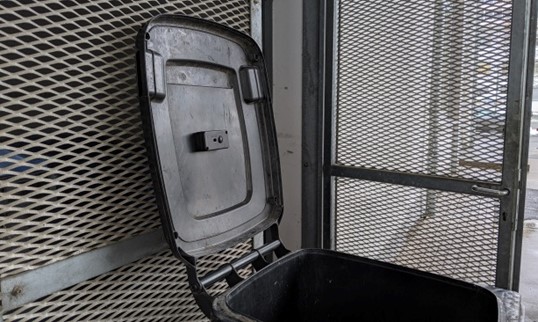Towards smarter waste management
Effective waste management is a crucial contributor to the quality of life in our cities however managing the collections can present municipalities with significant logistical challenges. Overflowing bins are unacceptable but focusing resources on emptying containers when they are only half full is inefficient. That’s why smart cities are increasingly leveraging sensor technologies to add intelligence to waste collection, making the operation more productive, cost-effective, and sustainable.
Waste collection is one of the critical services municipal bodies have to provide. In the EU alone, each citizen is estimated to generate 505kg of garbage each year. However, predicting the amount of rubbish people produce per day can be difficult, especially in busy locations such as city centres. Traditionally, collection has been arranged periodically, wisth the bins emptied regardless of whether they are full. The tactic is inefficient and costly, with resources spent on collecting containers that could serve for much longer.

Demand-led collection
There are various benefits to arranging waste collection only when needed. Less budget I spent on fuel costs, and fewer collections mean fewer trucks on the roads, reducing carbon emissions and the noise and congestion associated with rubbish collection. Optimising collection schedules can also help minimise disruption from staffing shortages. At the same time, the data collected by the sensors in IoT-enabled bins could prove a valuable asset in planning future infrastructure investments.
The sensor-led approach
Fortunately, the advances in IoT technologies are now enabling a more data-driven approach to bin collection. Municipalities can move towards demand-based collection models by leveraging sensors that allow accurate waste level monitoring in the containers.
Still, bins present several challenges to sensor technologies. To accurately measure the waste level inside the container, level sensors need to be installed inside the bin and accompanied by a communication technology to pass the data to the waste management team. The sensors also have to provide reliable measurement in various conditions, from high heat to humidity, and be robust enough to withstand exposure to the contents of the bin as well as possible damage from the public or wildlife. With the locations making maintenance challenging, they also need to allow ultra-low-power operation to maximise the battery life. Despite these requirements, the cost per unit must remain relatively low for city-wide deployment.
Key elements
Some waste sensor implementations rely on ultra-sonic sensing. However, the beams from the sensors are wide compared to much narrower Time of Flight (ToF) sensors, which can result in poor measurement accuracy in small and narrow containers. Here, optical methods can offer superior performance as long as mechanisms are put in place to mitigate interference from other light sources. Various wireless protocols are also available to support the sensing arrangements, from LoRaWAN to cellular IoT protocols such as LTE-M or NB-IoT.
Plug-and-play option
One technology seeing widespread implementation in across Europe comes from IoT solution provider Sentinum. Its Apollon-Q smart waste sensor solution is already helping municipalities revolutionise was collection, with data from customer implementations showing that even fairly small towns are reducing collection times by over eight hours per day. Featuring Murata’s IoT technology, the sensors are a great example of how Murata drives innovation in electronic design, overcoming operational constraints to contribute to the solutions of tomorrow.
Sentinum’s solution consists of plug-and-play sensor units that are installed in the containers that need to be monitored. The sensors use optical signals from multiple points to create surface approximations, providing accurate information on the waste level in the container. Featuring a battery life of up to five years, the sensors are hydrophobic and antistatic to ensure they can operate reliably in high levels of moisture and dust. Data from the sensors is displayed on an intuitive web interface to provide the insight operators need to plan collection.
The wireless technology incorporated in the sensor products relies on technical expertise from Murata. Its highly advanced and compact modules for low power wide area (LPWA) applications are crucial in enabling the required level of performance at the right cost, while their rugged design makes them suitable for the demanding environmental conditions found in waste level monitoring applications. The Apollon-Q LoRa sensor uses Murata’s ABZ module, while the NB-IoT version leverages Murata’s 1SC module and the Apollon-Zera LoRa relies on the 1SJ.
Unlocking new efficiencies
Moving towards smarter waste collection does not happen overnight, but solutions such as Sentinum’s Apollon-Q accelerate the shift, helping provide towns and municipalities with the tools they need to leverage the trend and reap the benefits of increased efficiency and sustainability. Murata is excited to see its IoT components play a vital role in this technology and the many new deployments already underway.
Link to Sentinum contact : https://www.sentinum.de/kontakt/
